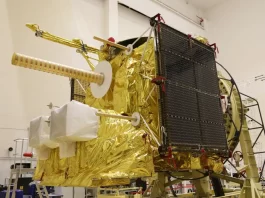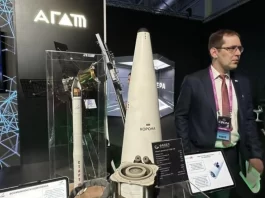A multitude of stars can be seen peeking out from behind the dim orange glow of the Sh2-54 nebula in the breathtaking infrared image seen above. This breathtaking star nursery in the constellation Serpens was captured in all of its intricate detail by the Visible and Infrared Survey Telescope for Astronomy (VISTA) located at the Paranal Observatory in Chile and operated by the European Southern Observatory (ESO).
When ancient people saw the night sky, they observed random star patterns. For example, the Greeks named one of these “constellations” Serpens because it resembled a snake. They would not have been able to observe the abundance of breathtaking astronomical objects near the tail end of this constellation. Among these are the Eagle, Omega, and Sh2-54 nebulae, the last of which is portrayed in a new light by this amazing infrared photograph.
Massive clouds of gas and dust that eventually coalesce into stars are called nebulae. Astronomers have been able to detect and investigate these obscure objects in an astounding level of detail because to the use of telescopes. The official name for this nebula is Sh2-54, and its distance from Earth is roughly 6000 light years. The “Sh” in its name refers to the American astronomer Steward Sharpless, who observed and catalogued more than 300 nebulae in the 1950s.
As the technology used to investigate the cosmos advances, so does our knowledge of these star nurseries. One of these developments is the ability to see beyond the range of visible light, such as infrared light. In the same way that the snake, this nebula’s namesake, evolved to detect infrared light to comprehend its environment better, the agency also developed infrared equipment to discover more about the universe.
Dust clouds readily absorb visible light in nebulae; however, infrared light can pass through the dense dust layers nearly unhindered. Therefore, this image exposes an abundance of stars concealed by dust veils. This is particularly valuable since it enables scientists to examine what occurs in stellar nurseries in greater detail and thus learn more about the formation of stars.
This picture was taken at the Paranal Observatory in Chile using the sophisticated 67-million-pixel camera that is attached to the European Southern Observatory’s VISTA telescope. It was gathered as a component of the VVVX survey, which is also referred to as the VISTA Variables in the Via Láctea eXtended survey. This multi-year project has routinely surveyed a large portion of the Milky Way at infrared wavelengths, producing important information that is necessary for comprehending the evolution of stars.





